Related Research Articles

Anne of Denmark was the wife of King James VI and I. She was Queen of Scotland from their marriage on 20 August 1589 and Queen of England and Ireland from the union of the Scottish and English crowns on 24 March 1603 until her death in 1619.
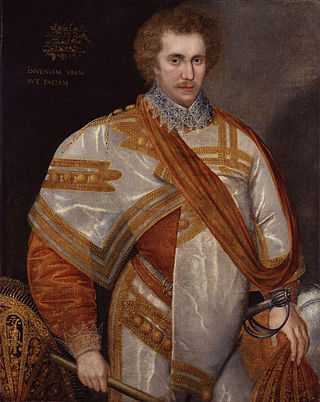
Robert Sidney, 1st Earl of Leicester, second son of Sir Henry Sidney, was a statesman of Elizabethan and Jacobean England. He was also a patron of the arts and a poet. His mother, Mary Sidney née Dudley, was a lady-in-waiting to Queen Elizabeth I and a sister of Robert Dudley, 1st Earl of Leicester, an advisor and favourite of the Queen.

The Jacobean era was the period in English and Scottish history that coincides with the reign of James VI of Scotland who also inherited the crown of England in 1603 as James I. The Jacobean era succeeds the Elizabethan era and precedes the Caroline era. The term "Jacobean" is often used for the distinctive styles of Jacobean architecture, visual arts, decorative arts, and literature which characterized that period.

Sir Ralph Winwood was an English diplomat and statesman to the Jacobean court.

William Cecil, 2nd Earl of Salisbury,, known as Viscount Cranborne from 1605 to 1612, was an English peer, nobleman, and politician.
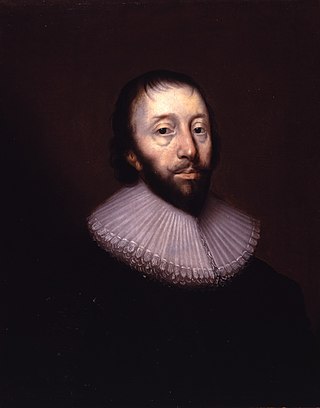
Sir Dudley Digges was an English diplomat and politician who sat in the House of Commons between 1610 and 1629. Digges was also a "Virginia adventurer," an investor who ventured his capital in the Virginia Company of London; his son Edward Digges would go on to be Governor of Virginia. Dudley Digges was responsible for the rebuilding of Chilham Castle, completed in around 1616.

Dudley Carleton, 1st Viscount Dorchester was an English art collector, diplomat and Secretary of State.
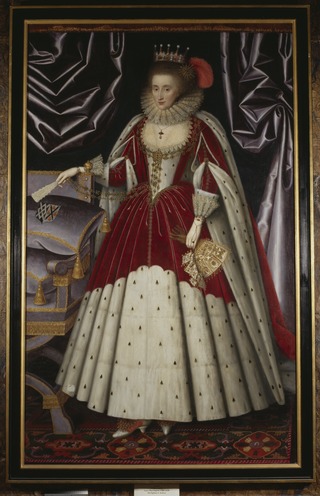
Lucy Russell, Countess of Bedford was a major aristocratic patron of the arts and literature in the Elizabethan and Jacobean eras, the primary non-royal performer in contemporary court masques, a letter-writer, and a poet. She was an adventurer (shareholder) in the Somers Isles Company, investing in Bermuda, where Harrington Sound is named after her.
The Master of the Robes is an office in the British Royal Household. He is responsible for the King's robes at times such as a coronation, the annual Order of the Garter service and the State Opening of Parliament. Since the reign of King Edward VII, the office has only been filled for coronations. Below is a list of known office holders:
Sir Isaac Wake was an English diplomat and political commentator. He served as ambassador to Savoy for sixteen years, and later as ambassador to France.
Thomas Murray was a Scottish courtier, at the end of his life Provost of Eton.
Bridget Norris, Countess of Berkshire was an English noblewoman, the daughter of Edward de Vere, 17th Earl of Oxford. Bridget was brought up by her maternal grandfather, the powerful statesman William Cecil, 1st Baron Burghley. She was also styled Lady Norris of Rycote and Viscountess Thame. She married Francis Norris, 1st Earl of Berkshire; however, the marriage was not a success, and they separated in 1606.
Christopher Villiers, 1st Earl of Anglesey, known at court as Kit Villiers, was an English courtier, Gentleman of the Bedchamber and later Master of the Robes to King James I. In 1623 he was ennobled as Earl of Anglesey and Baron Villiers of Daventry.
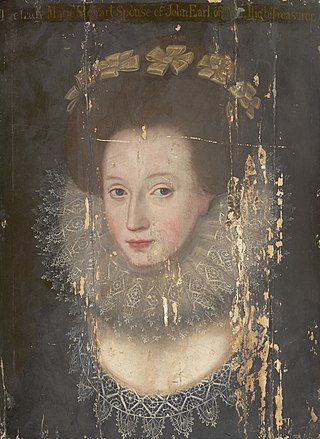
Marie Stewart, Countess of Mar (1576-1644) was a Scottish courtier. She was the daughter of Esmé Stewart, 1st Duke of Lennox and Catherine de Balsac d’Entragues (d. c.1631) and a favourite of James VI of Scotland. After her marriage, as was customary in Scotland, she did not change her name, and signed her letters as "Marie Stewart".
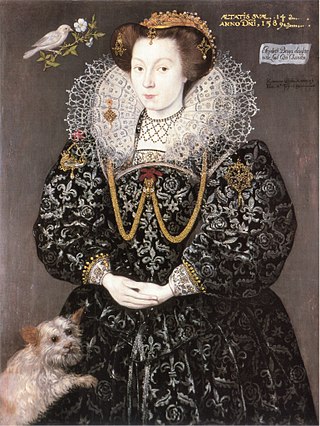
Elizabeth Brydges was a courtier and aristocrat, Maid of Honour to Elizabeth I, and victim of bigamy. She was a daughter of Giles Brydges, 3rd Baron Chandos, and Frances Clinton, who lived at Sudeley Castle.
Sir Edward Zouch of Woking was a courtier to English kings James and Charles I, a masque actor, and Knight Marshal of the King's Household.
Mary Middlemore was a Courtier and Maid of Honour to Anne of Denmark, subject of poems, and treasure hunter.
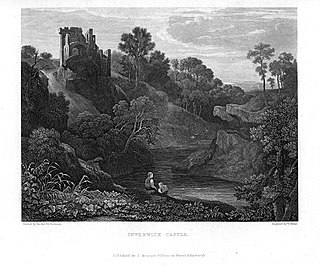
James Maxwell, 1st Earl of Dirletoun was a Scottish courtier and landowner, and Black Rod. He was involved in selling royal jewels.
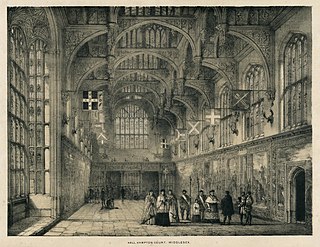
The Masque of Indian and China Knights was performed at Hampton Court in Richmond, England on 1 January 1604. The masque was not published, and no text survives. It was described in a letter written by Dudley Carleton. The historian Leeds Barroll prefers the title, Masque of the Orient Knights.
References
- ↑ Gardiner, Samuel Rawson (2000). History of England from the Accession of James I to the Outbreak of the Civil War: 1603–1642. Adegi Graphics. p. 361. ISBN 978-1-4021-8413-0.
- ↑ Horace Vere (DNB00)
- ↑ The Correspondence of Elizabeth Stuart, Queen of Bohemia: 1603-1631. Oxford University Press. 2011. p. 401. ISBN 978-0-19-955107-1 . Retrieved 18 October 2023.
- ↑ Dalton, Charles (1885). Life and Times of General Sir Edward Cecil, Viscount Wimbledon, Colonel of an English Regiment in the Dutch Service, 1605-1631, and One of His Majesty's Most Honourable Privy Council, 1626-1638. S. Low, Marston, Searle, & Rivington. p. 15. Retrieved 18 October 2023.
- ↑ Bergeron, David M. (2021). "Gerrard Herbert's Reports about Drama Performances, 1617–19". Studies in Philology. pp. 725–741. JSTOR 27082548 . Retrieved 18 October 2023.
- ↑ John Sherren Brewer, Court of King James, 2 (London, 1839), 187–188.